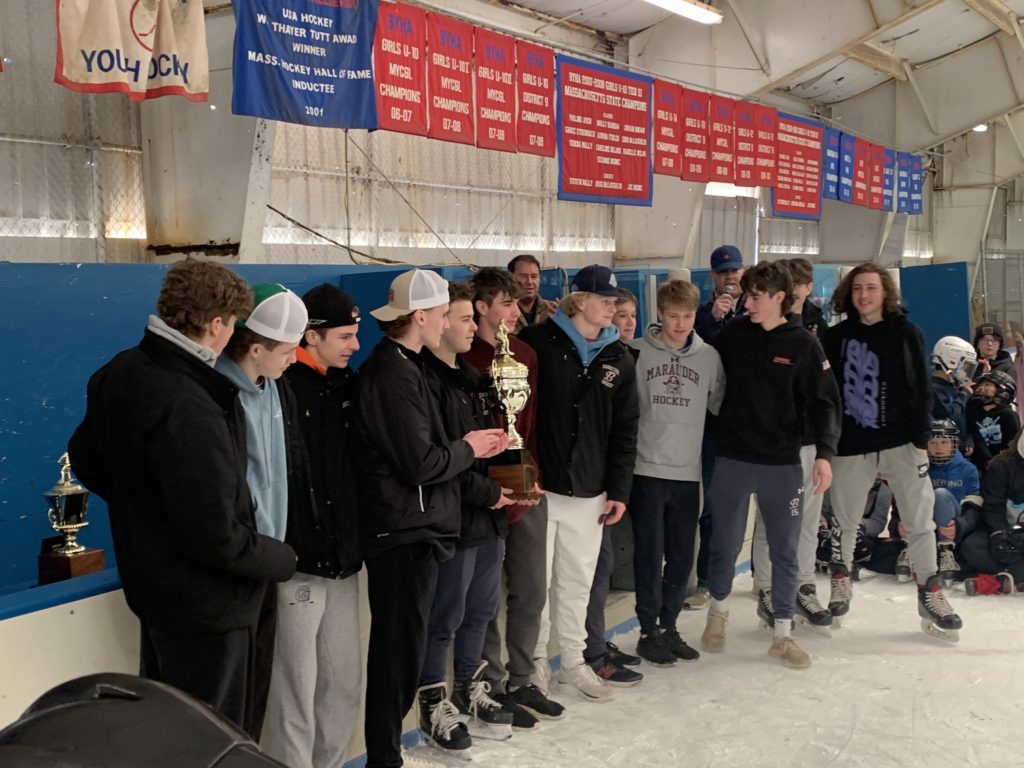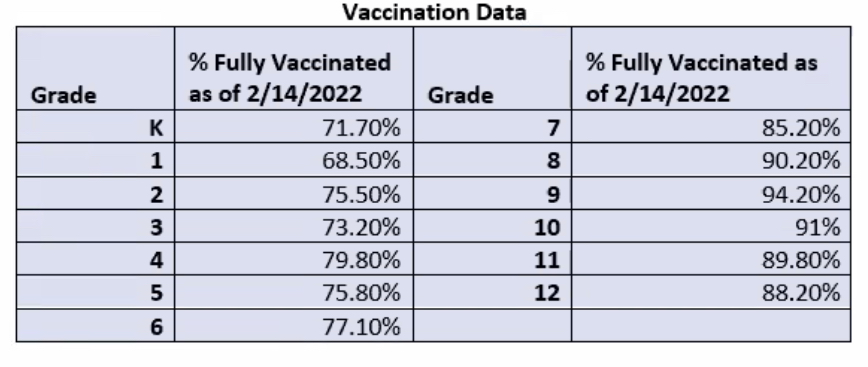Photo: Belmont High sophomore Michael Pomer on the attack against Xaverian in the quarterfinals of the 2022 MIAA Division 1 ice hockey tournament.
The playoff run for Belmont High’s boys’ ice hockey squad ended on a dreary Saturday afternoon in far off Attleboro.
The defense and goaltending that gave up just 25 goals in 22 games was keeping Belmont High in its Division 1 boys’ hockey quarterfinals with Xaverian Brothers High. The Hawks relentless offense and clear shots should have given the opponent more than a single goal deep in the third period but for senior standout goaltender Ryan Griffin who stopped 43 of 44 shots late in the stanza.
Yet in the end, the consistent pressure the Hawks applied in Belmont’s end of the ice foretold the playoff game’s outcome as the Hawks’ senior forward Max Lockwood steered in an in-close rebound on his team’s 45th shot on net with just under four minutes remaining to seal a 2-1 victory over Belmont, sending the Xaverian (19-3-1) into the state semifinals where they meet Arlington on Tuesday, March 15.
Belmont ends the season at 19-2-3 with the program’s second deep playoff run in as many tournaments.
“Great season, great game. We played our usual game, we weren’t going to deviate from that,” said Belmont’s first year head coach Tim Foley postgame. “We have to strike when the opportunity presents itself. We had a couple of chances but didn’t really capitalize on them.”

“We had nothing left on the bench when this game was over which is all you can ask for,” he said.
Belmont fans and student supporters – bused to the game thanks to a donated bus paid for by Lynn Findlay Homes – hoofed the 80-mile round trip to Attleboro to provide a true playoff experience for the Marauders who were very much the away team.
As they had done all year, Belmont “wanted to jump on them right from the start” said Foley to grab an early lead. With the drop of the puck, Belmont skated by the Xaverian defense and just missed going up in the first 10 seconds as a shot deflected just beyond junior Cam Fici’s reach at the doorstep.
On the other end, the Hawks’ came out banging, looking to sit any Marauder with the puck onto the ice. The Hawks’ game plan was to spread out its forwards and breakout with long “stretch” passes or solo carry the puck deep into Belmont’s defensive zone, somewhat negating the Marauders defensive set up on blocking passing lanes and winning the stick-on-stick battles.
“We knew that was coming and and think we were successful most of the game. But they really dug in and played their game,” said Foley.
Xaverian broke through midway into the first on a text book passing play had the Marauder defense somewhat static leaving junior first liner Joe DiMartino wide-open in front to beat Griffin.
The Marauders spent most of the second watching Xaverian control the puck deep in the Belmont end as Griffin made a series of one-on-one saves. As the clock ticked down to the end of the period, that one opportunity the Marauders were hoping for opened and they took advantage.

While on the penalty kill, junior defender Joe Gaziano sent junior Shay Donahue and Fici away on a two-on-two break. With both Xaverian defenders preoccupied by Fici – who scored 35 goals in the season – Donahue shot from the left slot was blocked but landing back down on his stick. The junior would not miss from six feet away knotting up match at one with two minutes remaining.
While reminiscent of Marco Santagati’s shorthand goal in Belmont’s 2020 Division 1 semi-final classic vs St. John’s (Shrewsbury) tying that game late, the Marauders could not capitalize on the change of momentum that included a power play that stretched into the third.
Soon Griffin was under assault as the Hawks would station a player at the top of the crease to bang away at every advantage. The stubborn Belmont defense led by Gaziano and junior Peter Grace finally cracked when Lockwood scored from right of the goal with just under three minutes to play. With Griffin pulled, Belmont could only send a few long distance testers at senior goaltender Brendan Flanagan as the horn sounded.
Speaking to his team after the game, Foley told the senior class they “have a lot to be proud of … and had nothing to be ashamed of the way they played and competed in every single game of this season.”
“I know going forward in life, I have no worries that’s any of them rate going to be anything but a success because of the way they performed on the ice and conducted themselves with class everywhere they went,” he said.

